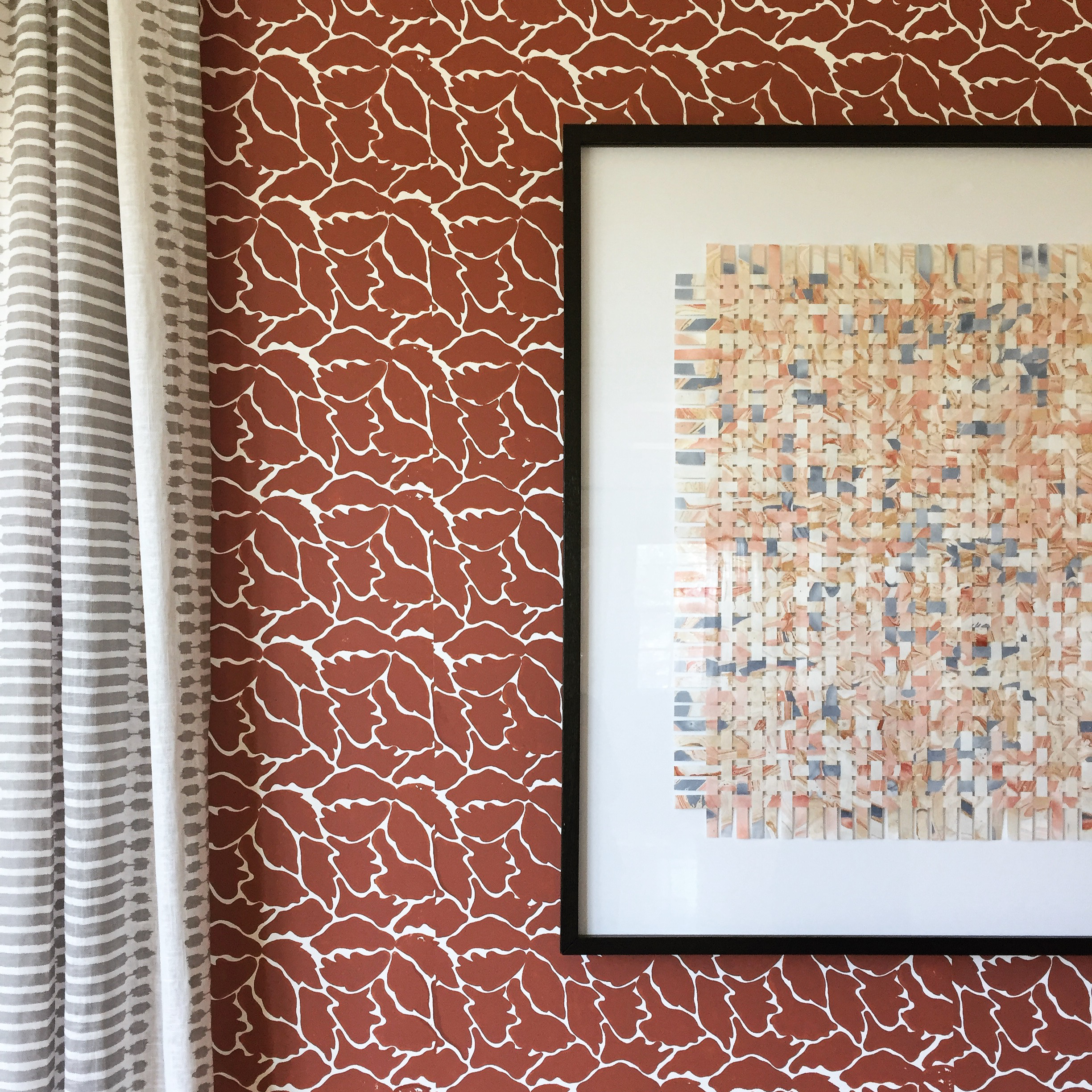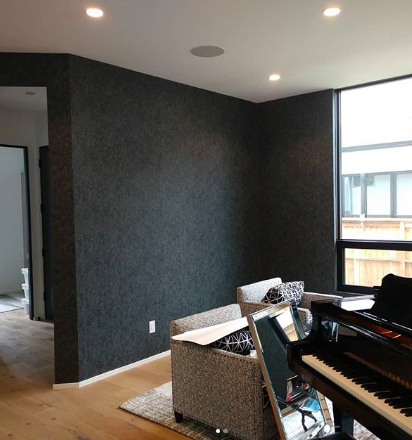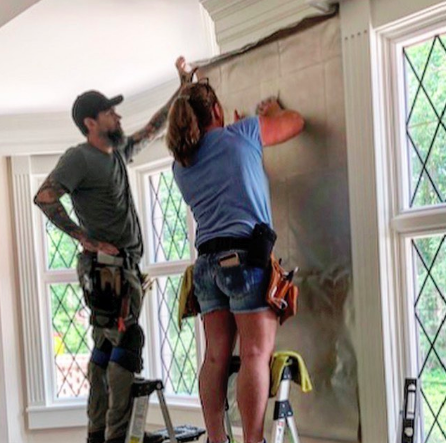What professional wallcovering installer doesn’t love a good before and after a la HGTV? There aren't many that don't love a big reveal. For the professional in charge of taking a drab wall - where paint just wouldn’t cut it - and transforming it into a precise, exquisitely designed, paperhanging, the before and after the most gratifying.
The heavy lifting of actually doing the work is a bit different than enjoying an hour-long episode curated to build suspense. For those in that boat, we are inspired by the pain Leanne and Steve Ford from Restored with the Fords recently experienced with their Pittsburgh interior takeover. In a recent home makeover they completed earlier this year, they painfully stripped old wallpaper from crevices, large walls, and even ceiling borders. (Chances are that you’ve been there with the Fords and can emphasize with their pain.) Entering stage left are adhesive technology options that will help make paper hanging (and removing) easier in the future. Now with these wallpaper adhesives, the wallpaper installer can enjoy the after as much as the before and during.
Three Wallpaper Adhesive Options
We are seeing technological advancements exceeding the traditional adhesives such as powder or clay based with solutions like vinyl adhesive and pre-paste activators entering the market. As a result of adhesive advancements in wallpaper, stakeholders that include both the installer and the customer are benefiting from a greater ease of removing old paper. If only there weren’t so many old interiors in need of wallpaper removal - installers and designers would be on their way to quicker removal and better applications of new modern designs. The three main categories of adhesives include:
Clear Adhesives
When working with clear adhesives the material is either corn or wheat based. This material tends to be the go-to for many wallcovering installers for attributes that include easier cleanup and greater open-time. They can be used both for the home and commercial installer.
Powder or Clay Based Adhesives
Like clear adhesives, the material is also starch based; however, clay is also added. The effect leaves the adhesive more sticky and tacky. Keep in mind that when working with this tried and true glue the clean up tends to be more laborious.
Vinyl Adhesives
The make up of vinyl adhesive is mainly comprised of synthetic polymers so they can easily bond to vinyl; however, vinyl may contain some starch too. While vinyl is seen as more versatile, the material is not for the beginner installer. Careful precision during the application of the material is required because these adhesives dry permanently. While these adhesives require extra attention during the installation process, they offer the flexibility to hang new wallcoverings to existing walls already covered in paper or adding borders to existing wallcoverings.
Before your next big reveal of a beautiful wallcovering and when you are choosing which adhesive is right for you, these main adhesives will be on your list. Remember there are special considerations when working with different textiles, fabric-backed vinyl, and more as listed out by this beautiful and environmentally-friendly wallcovering company, TRI-KES.




